Riverside Park Plant Information
The following is a listing of plants commonly found at Riverside Park the focus is on wetland plants near the parking lot.
Riverside Park is managed by Ottawa County.
Plants are organized by growth form and phylogenetic grouping as follows:
|
Herbaceous |
|---|
|
Dicot |
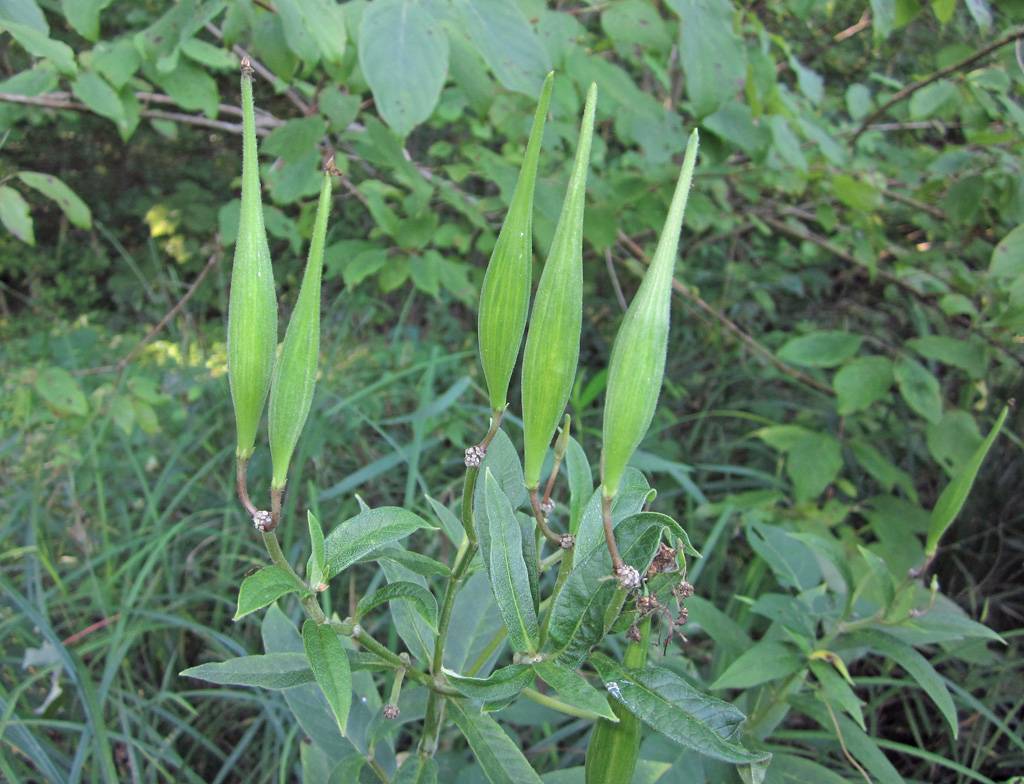
Asclepias incarnata – swamp milkweed
Asclepiad-aceae
Small herb; leaves opposite, narrow, lance-shaped to linear to oblong; smooth; flowers in several umbels, pink; ֎milky juice if broken stems or leaves (characteristic of family); ֎long pointed seed pods; wet meadow and coastal shoreline.
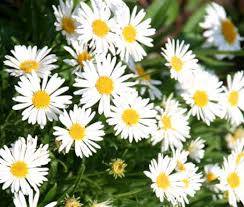
Aster sp. – aster (recently split into Canadanthus, Dellingeria, Durybia, Oclemena, Sericocarpus, Symphyotrichum)
Aster-aceae
Herb; leaves variable but usually lanceolate with a tapering point; ֎flower heads with a yellow disk, rays are blue, purple or white.
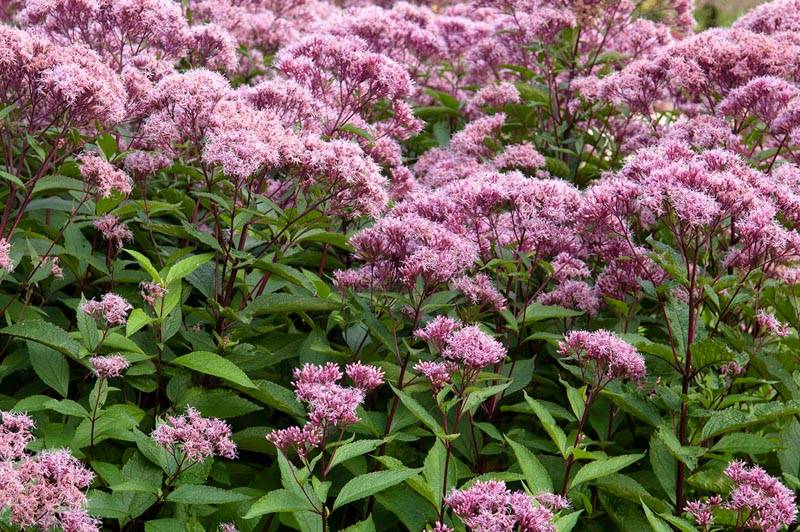
Eupatorium maculatum – joe-pye-weed
Aster-aceae
Large herb up to 1m; stem deep purple or purple spotted, rough and coarse; ֎leaves in whorls, on short petioles, uppermost leaves shorter than the inflorescence, lance-shaped to linear; flower heads in disks, numerous umbels, clustered, flat-topped, pink or purple; shallow marshes, shores, wet meadows, swales.
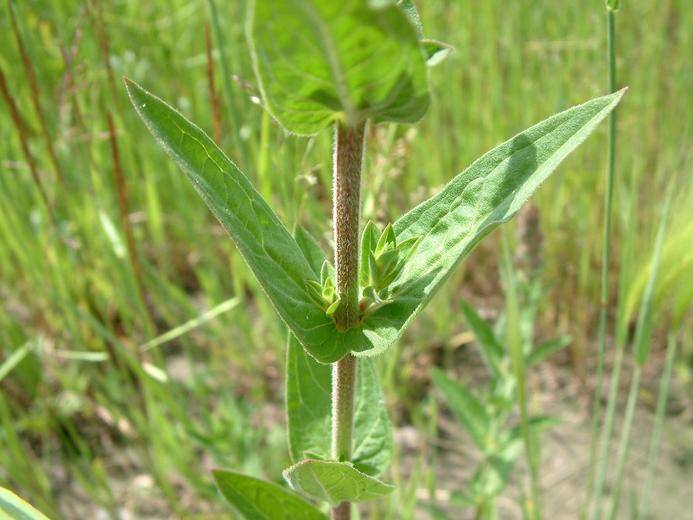
Lythrum salicaria - purple loosestrife
Lythr-aceae
Large herb up to 2.5m; ֎stems angled, slender, not woody (can be woody as they age); ֎leaves mostly opposite (although often also alternate on the same plant), ֎sessile (no petiole), often almost heart-shaped at base; ֎flowers numerous in long purple spikes; many seeded; wet meadow, shores, shallow marsh. This invasive is common throughout West Michigan and originally escaped from cultivation and was planted as a pretty garden plant. If you see only a few, then remove them, but do not kill native loosestrifes.
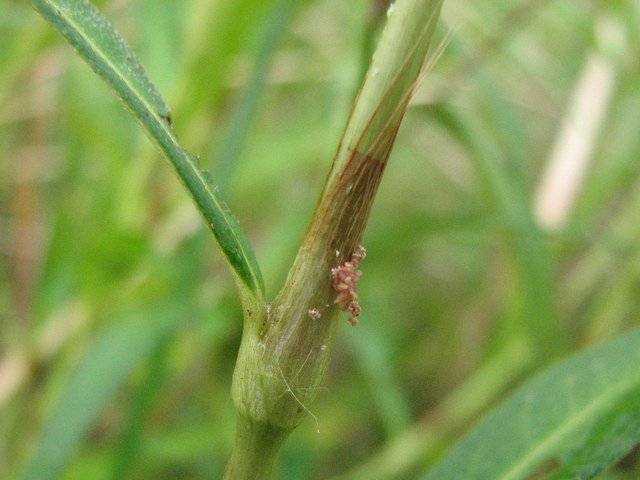
Polygonum sp. - smartweed (split into Bistorta, Fallopia, Persicaria)
Polygon-aceae
Herb; leaves long, narrow, lance-shaped; flower pink or whitish spike-like clusters, without petals, made up of sepals; “knotted” or zigzag stems, swollen sheaths or joints with ֎papery sheath (ochrea) at each joint; ֎winged achenes; very shallow marshes, wet places, swales, wet meadows, swamps.
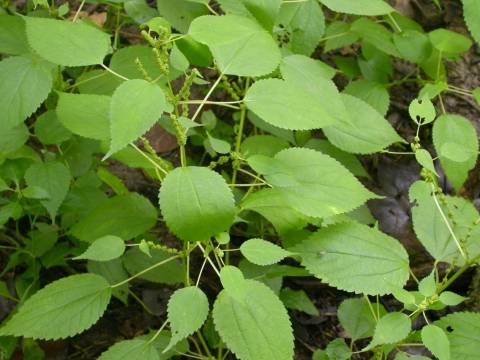
Boehmeria (cylindrica) - false nettle
Urtic-aceae
Medium herb 16-40”; stem hollow, 4-angled; leaves opposite, ֎NO stinging hairs, well stalked, coarsely toothed, ovate; ֎flowering stalks upright with ֎cylindrical clusters (looks like you gave a kid the ice cream scoop and left the room), often with leaves at the terminal end of the inflorescence, ֎from the leaf axis, green; floodplains, swamps.
Monocot (Herbaceous)
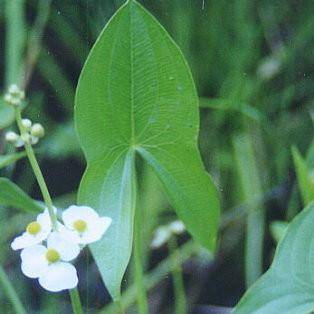
Sagittaria sp. – arrowhead
Alismat-aceae
Aquatic herb; leaves variable ֎arrow-shaped to elliptical (ribbon-like) to lance-shaped, erect extending above the surface, arising from the base which is normally submersed; inflorescence is a raceme or panicle of whorled white flowers with three round-ish petals; fruit are in dense yellowish heads; ponds, shallow marshes, shores. ֎Leaf veins similar to spider-man symbol.
S. latifolia (duck potato, wapato) with edible tubers in spring or fall (deep).
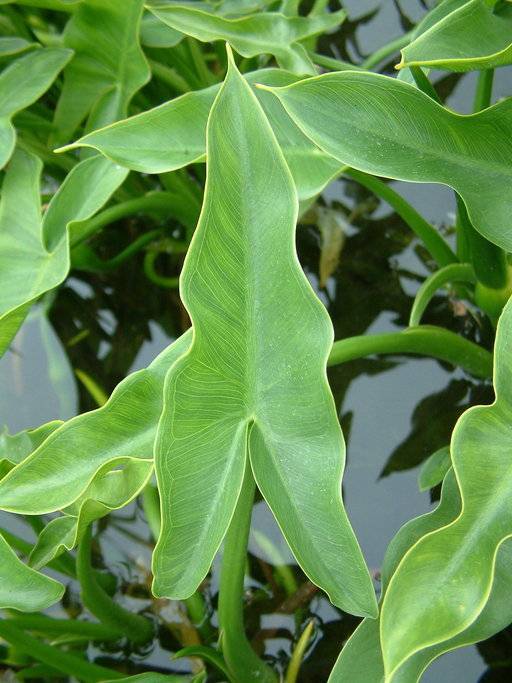
Peltandra (virginica) – arrow arum
Ar-aceae
Aquatic herb, strong rosette; leaves lobed at base (typically sagittate), each basal lobe with a heavy central vein, 3-nerved,with a small ֎veins that run along the entire leaf margin (like a child traced the leaf); spathe green, fleshy, in-rolled; herbs growing on muddy shores and shallow water.
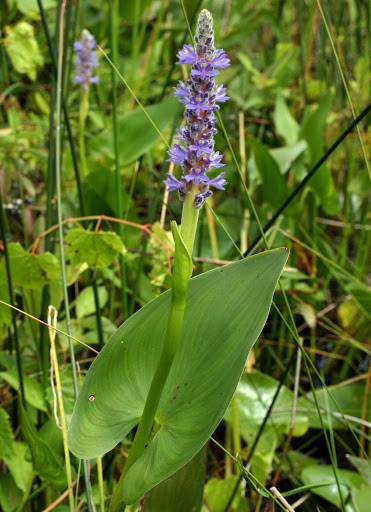
Pontedaria (cordata) - pickerelweed
Pontedari-aceae
Medium herb typically emergent in shallow water; leaves clustered, large, ֎arrow or heart-shaped with ֎numerous parallel veins that flow from one point like un-mixed paint, extending erect above the water surface; flowering stems consist of a single leaf and a ֎dense spike of blue/purple bilabiate flowers; marsh or pond; shallow water, 15-50cm deep.
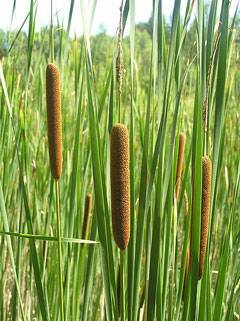
Typha sp. - cattail
Typh-aceae
Large emergent herb (generally growing out of shallow water); the two species listed below can produce hybrids so that identification can be difficult; in this class, when given two species the difference will be obvious between the two. Both have ֎long skinny leaves that originate from the same point (round base unlike iris which is fan shaped at the base) and ֎corn-dog looking inflorescences. Flowers small and unisexual, arranged into close cylindrical spikes which consist of an upper region of staminate (male) flowers and a lower region of pistillate (female) flowers in a dark brown spike (the male flower falls off after pollination). The pollen can be harvested and is flour like. The hybrid is generally invasive and can take over large areas.
Typha angustifolia - narrow-leaved cattail
֎Leaves long thin and ribbon-like, 3-8mm wide; stem is slender, underground stems spread rapidly; ֎staminate and pistillate portions are usually divided by at least 5mm.
Typha latifolia - broad-leaved cattail
֎Leaves flat, thick and wide, 6-15mm wide; stems stout, underground stems spread rapidly; ֎staminate and pistillate portions are usually contiguous.
Graminoid (Herbaceous monocot)
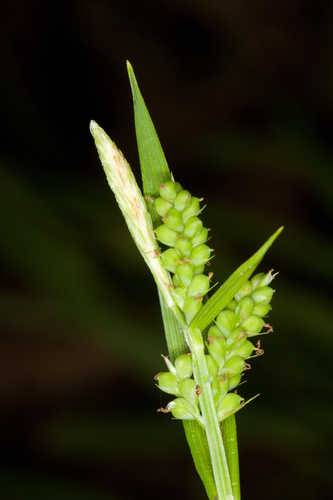
Carex sp. – carex
Cyper-aceae
Extremely diverse sedge; nutlet enclosed in a ֎perigynium (sack-like structure unique to carex); stamens and pistils in separate flowers; staminate and pistillate flowers may be in separate spikes, in different parts of the same spike or scattered and scarcely distinguishable in each spike. The most diverse plant genus with more than 100 species in West Michigan.
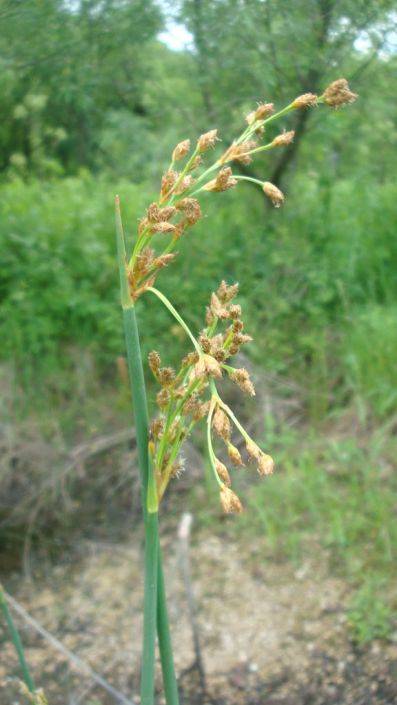
Scirpus validus – softstem bulrush (new name: Schoenoplectus tabernaemontani)
Cyper-aceae
Large sedge with single ֎round stem with sheath at base, sometimes leafy and sometimes naked from 70cm-200cm in height, inflorescence sub-terminal and spikelets several, with involucre (bracts) from the base of spikelet; a wide range of water depth habitat from open swales to shallow and deep marshes, common in shallow water of early successional habitats; similar to S. acutus, stem thicker at the base (0.8-2.5cm), light green, ֎soft and spongy (can be easily squished by pinching).
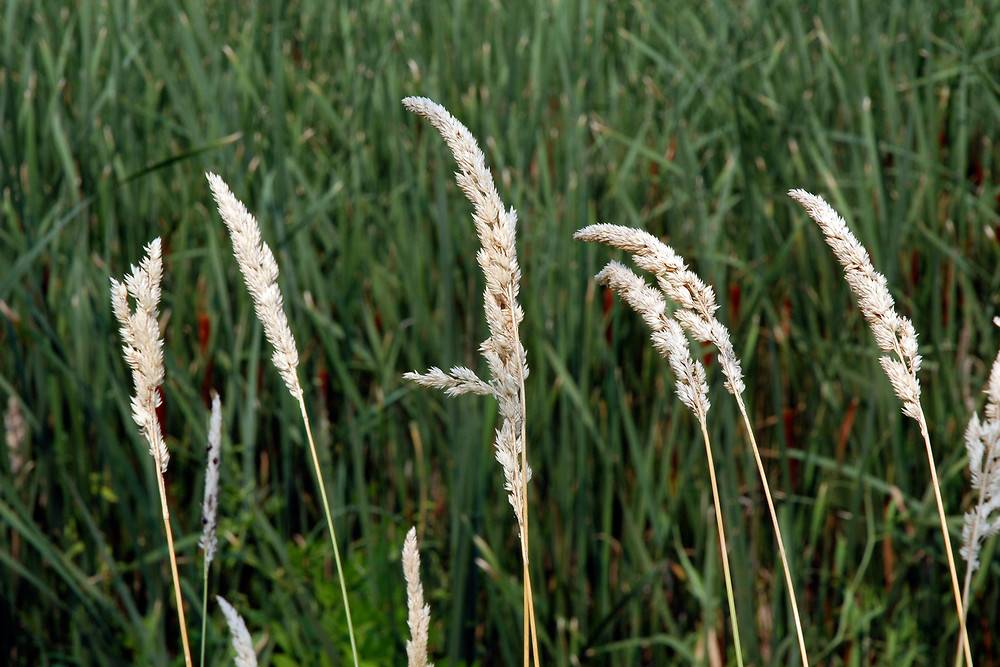
Phalaris arundinacea - reed canary grass
Po-aceae
Very common grass up to 1.5m; found in large clumps especially in drainage ditches; flowers in spikelets in club-like masses (֎compound spike), stamens and pistils borne in same spikelet without spines, not all on one side; shores, swales, wet meadows; lemma with 2 tufts of silky hairs at base; can be highly invasive.
|
Aquatic -herbaceous floating or submerged |
|---|
|
Dicot |
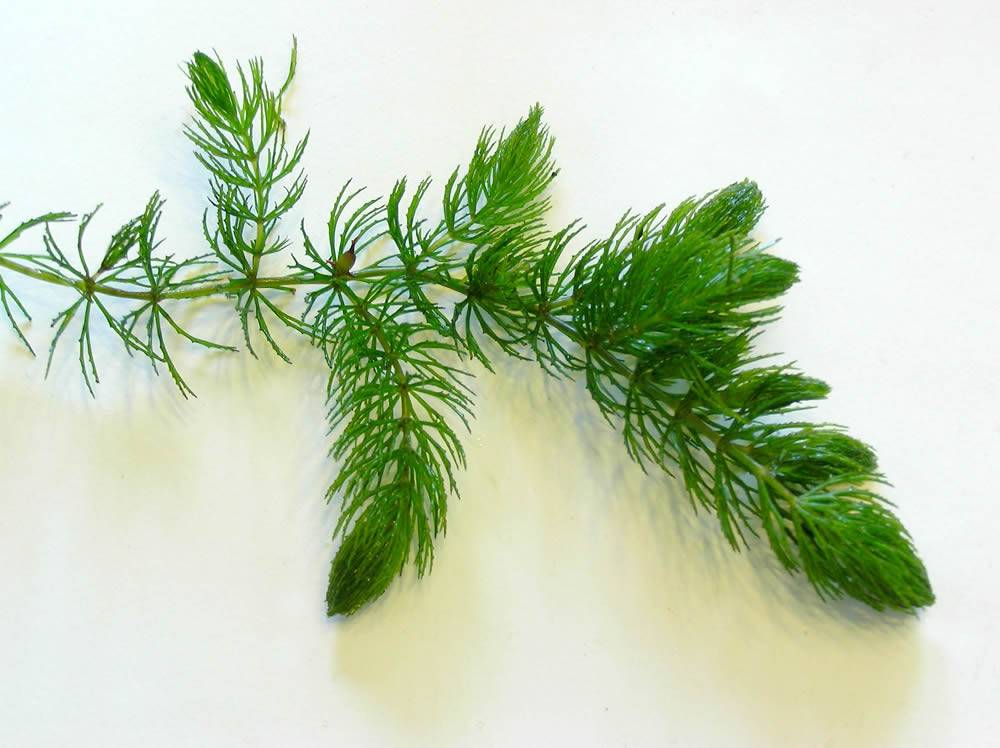
Ceratophyllum sp. – coontail
Ceratophyll-aceae
Exclusively submerged; leaves ֎whorled, ֎dichotomously forked with ֎spiny teeth along one side, more crowded toward the tip giving the “coontail” appearance; plants free floating, without roots; variable in length; ponds, shallow marshes. Weird fact: vascular plant with no vascular tissue.
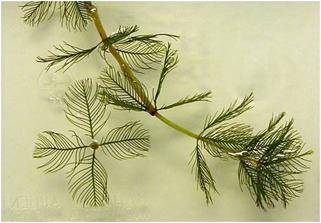
Myriophyllum sp. – water milfoil
Haloragid-aceae
Submerged herb (some species can grow out of the water); stems simple or branched, ֎submerged or sometimes floating or ascending; leaves variously arranged, usually ֎whorled and pinnately compound ֎ (feather like in appearance); inflorescence terminal or axillary; mostly submerged or seasonally terrestrial. There are several species in the region although most water ways are dominated by the invasive European milfoil (Myriophyllum spicatum); generally identification is difficult and sometimes impossible without genetic analysis due to hybrids, but if you find the emerged inflorescence, then this guide can help with identification.
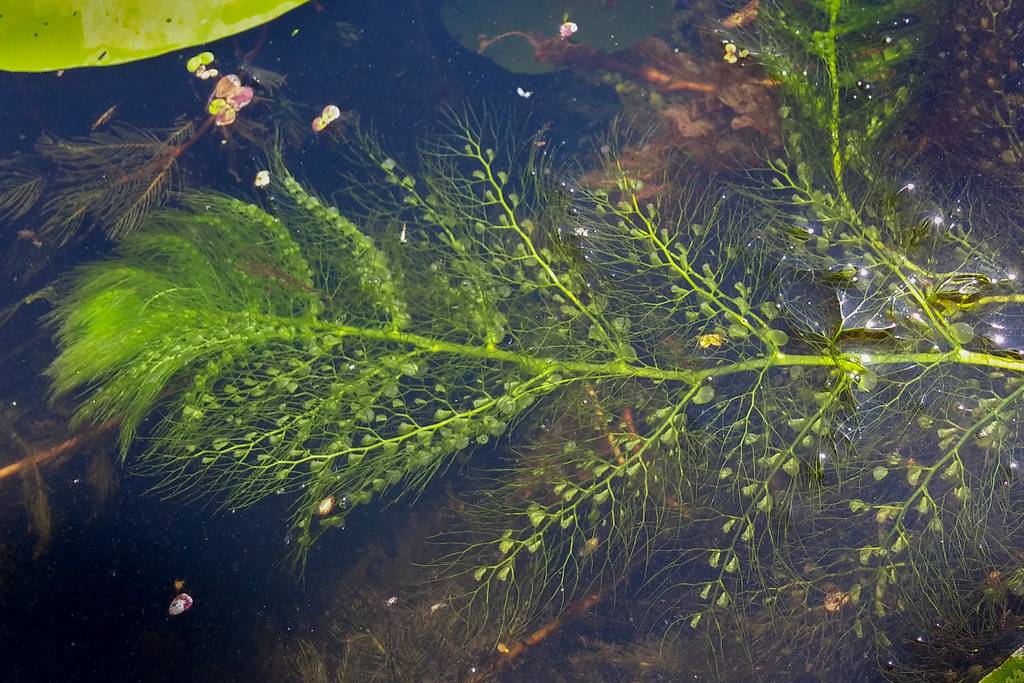
Utricularia sp. – bladderwort
Lentibulari-aceae
Aquatic herb usually submerged and floating near the surface; leaves filament-like, branched submerged in mud or floating horizontally in shallow water usually with ֎tiny bladders (to catch small animal life); flowering stalk several inches tall, flower zygomorphic with two lips and a spur, mostly yellow; fruit a pod; shallow marshes, muddy shore. There are many species in West Michigan associated with very low nutrients (hence carnivorous), but Utricularia vulgaris is commonly found in nutrient rich waters.
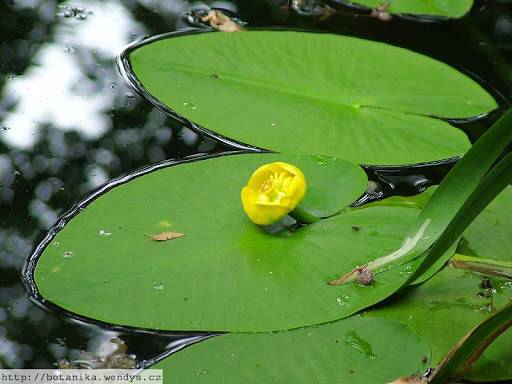
Nuphar sp. - yellow water lily
Nymphae-aceae
Floating or emergent herb; large floating leaves, ֎leaf blades oblong to oval or heart-shaped; underground stem (rhizome) thick and fleshy (֎sometimes firm petiole, may have emergent leaves); floating flower, with ֎rounded yellow petal-like sepals.
Monocot (Aquatic -herbaceous floating or submerged)

Lemna minor – duckweed
Lemn-aceae
Floating herb; with roots; ֎one root to each joint/frond; ֎green underneath; 2-5mm long; joints rounded, not stalked; float until cold weather; shallow marshes, ponds, stagnant waters.
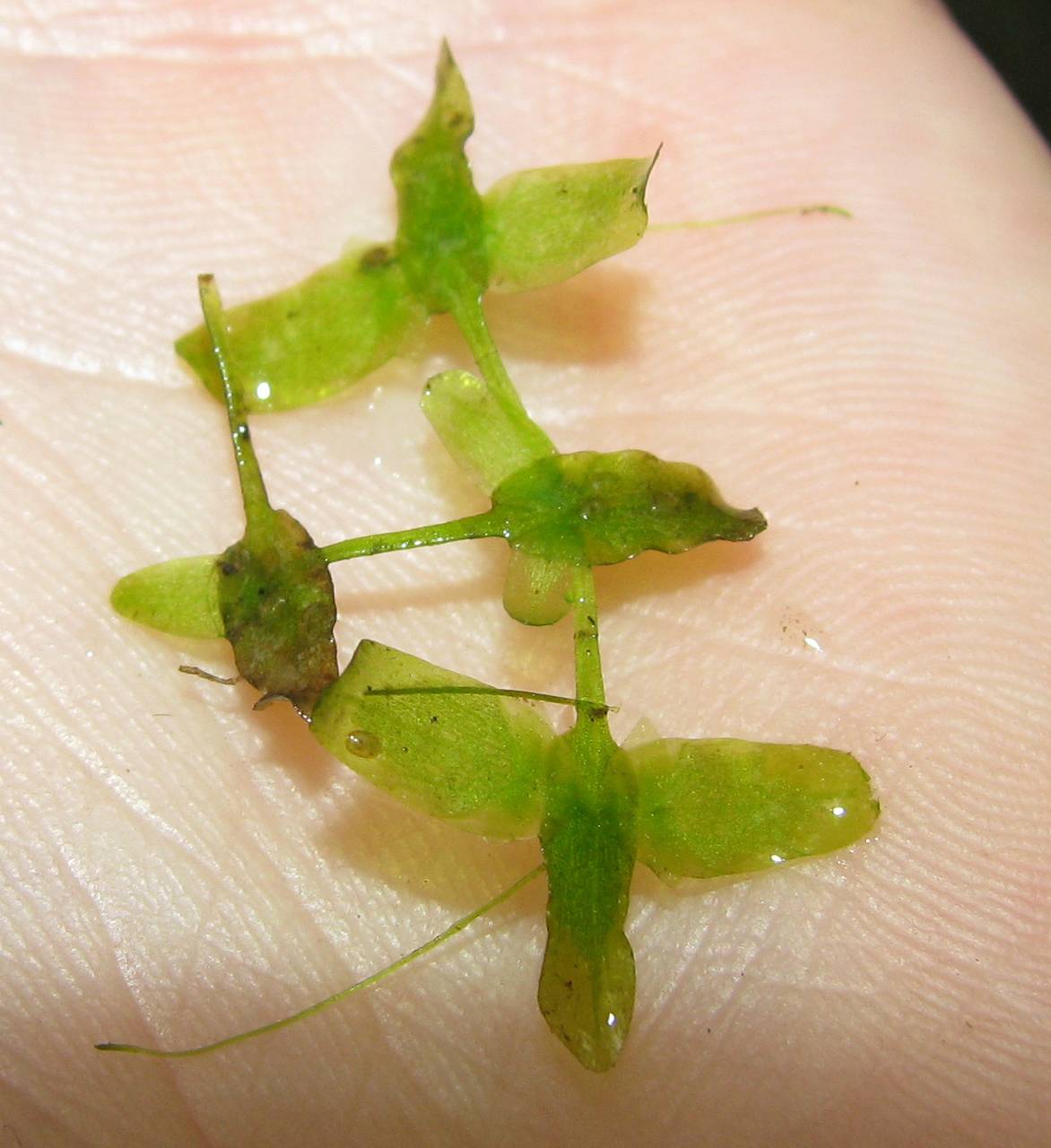
Lemna trisulca – star duckweed
Lemn-aceae
֎Floating beneath the surface; with roots; one root to each joint/frond; green underneath; joints of plants ֎long and narrow (triangular), ֎stalked (making a distinctive pattern); commonly sinking; shallow marshes, ponds, stagnant waters.
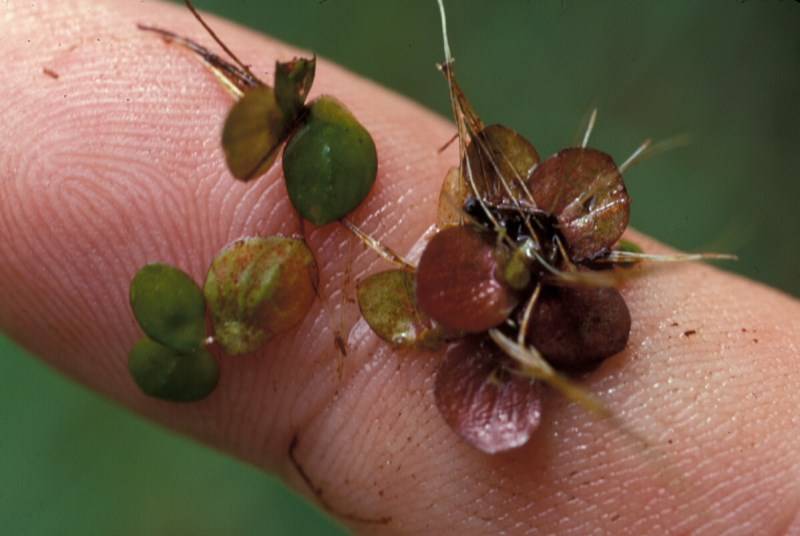
Spirodela polyrhiza – big duckweed
Lemn-aceae
Floating herb; with roots; ֎red on the lower surface; ֎each joint/frond with several roots; relatively large (3-10mm); shallow marshes, ponds, stagnant waters.
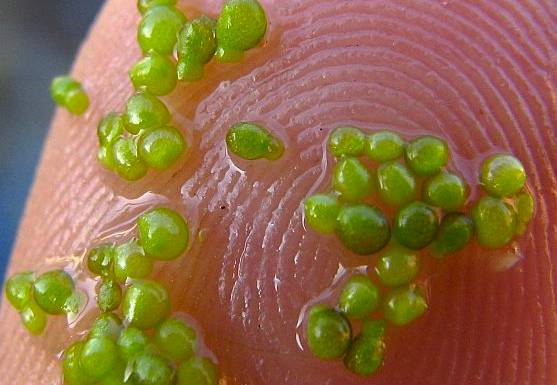
Wolffia sp. – water meal
Lemn-aceae
Floating herb; ֎without roots; plants globular, tiny: size of corn meal grains, 0.5-1.5mm long (֎smallest flowering plant known to science); shallow marshes, ponds, stagnant waters.
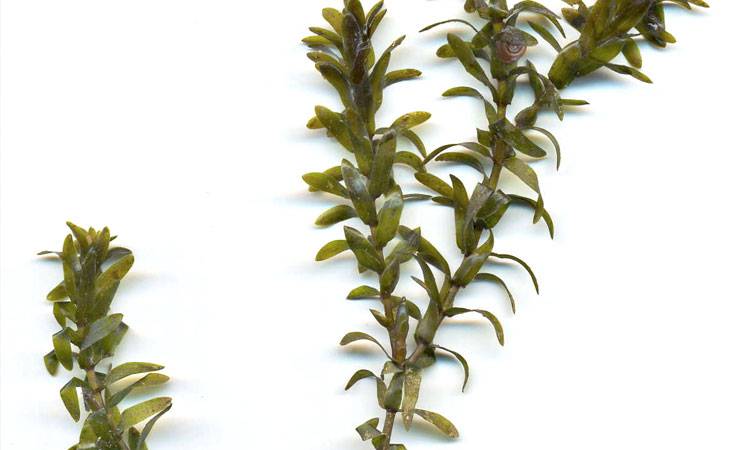
Elodea sp. – waterweed
Hydrocharit-aceae
Submerged herb; branching stems forming large masses at the bottom; ֎leaves in whorls of 3, ֎small ribbon-like; flowers from a spathe, pistillate with a long thread-like tube reaching surface; shores, ponds, shallow marshes.

Potamogeton crispus - curly pondweed
Potamogeton-aceae
Invasive submerged herb; ֎stems compressed (flat) with few branches; leaves all submersed, ֎sessile, oblong rounded at tip wavy with ֎fine toothed margins and 3-5 veins; stipule often disintegrating; shallow to deep water of lakes, highly pollution tolerant.
|
Vine -herbaceous or woody |
|---|
|
Dicot |
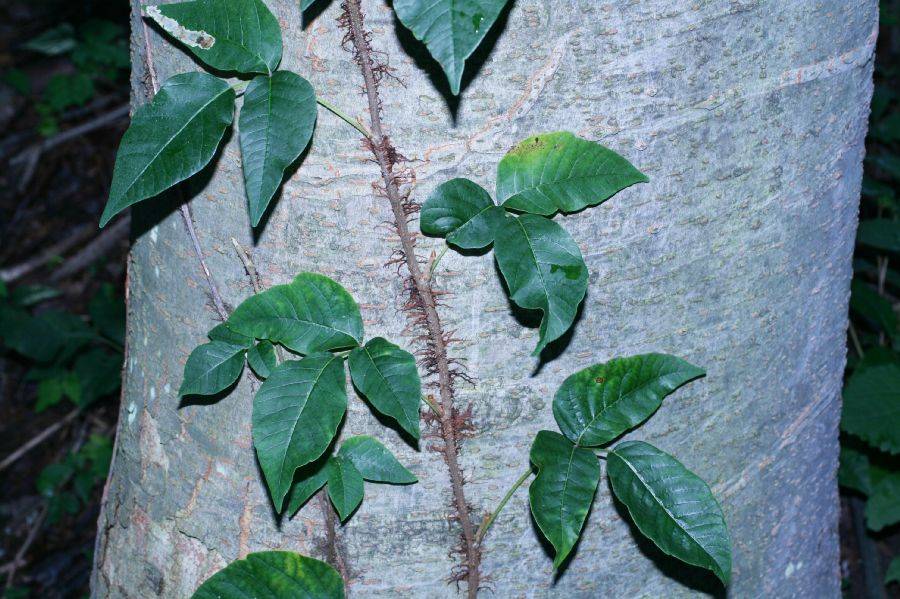
Toxicodendron radicans – poison ivy
Anacardi-aceae
Growth form variable: trailing or climbing vine, small shrub, ground cover; leaves ֎alternate, ֎irregularly serrate, ֎trifoliate, dull green, often w/ toothed leaflets, 4-14”; fruit is a cluster of white berries (drupe), Aug-Nov; vines with hair-like projections when growing on tree trunk.
Causes allergic reaction.
|
Shrub -woody |
|---|
|
Dicot |
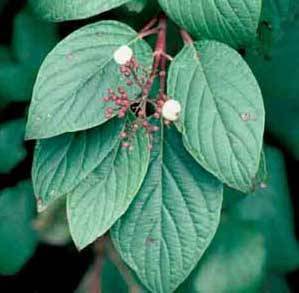
Cornus sp. – dogwood
Corn-aceae
Shrub or small tree; entire leaves usually opposite; ֎leaf veins follow the smooth leaf edges toward the tips; ֎silky sap apparent between veins when leaves are gently broken; twigs often reddish or purple; leaf buds with only 1 pair of scales; flowers 4 petaled with greatly reduced or no calyx, some species with showy bracts; typically very hard wood.
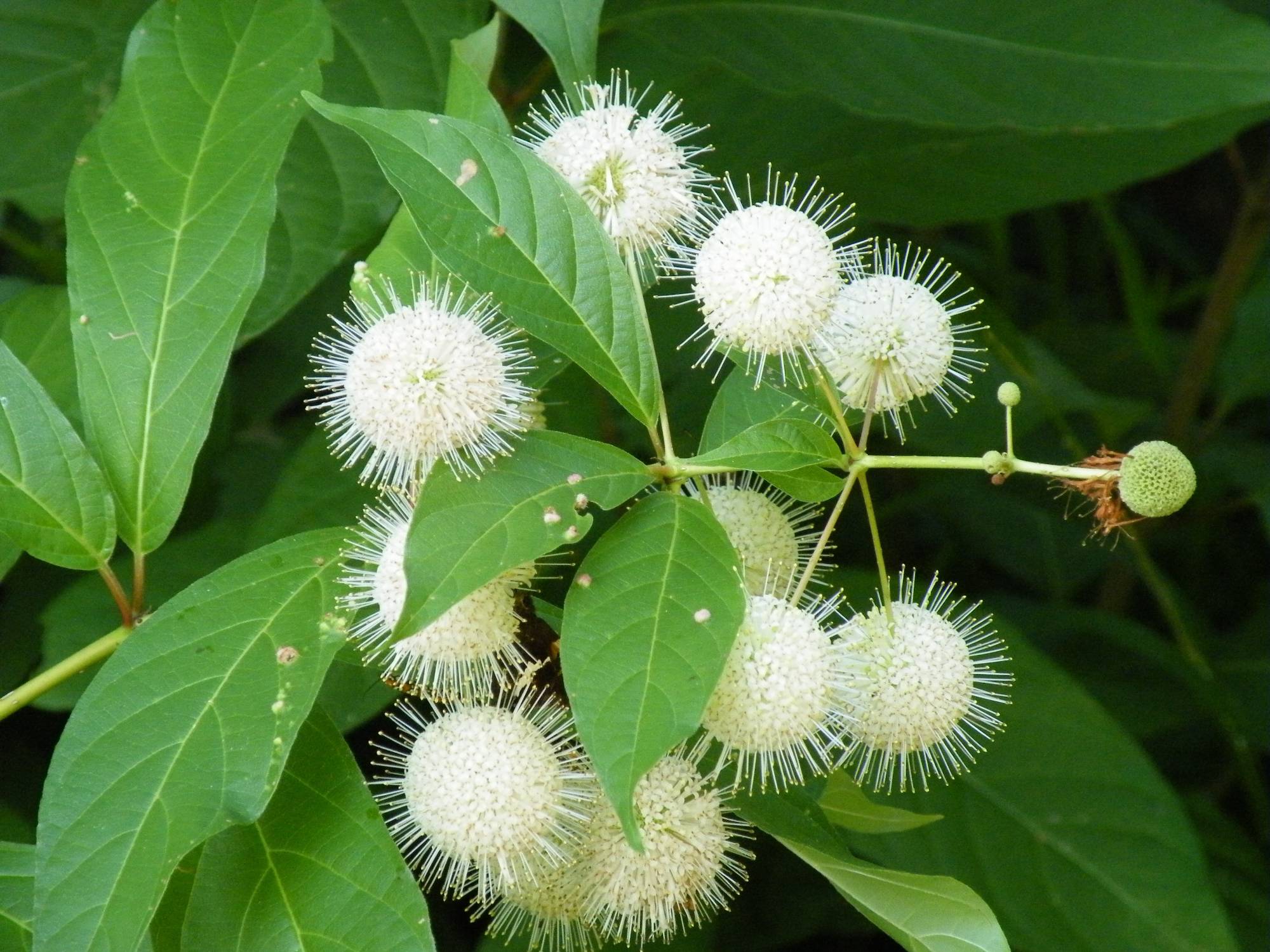
Cephalanthus occidentalis - buttonbush
Rubi-aceae
Medium shrub; ֎leaves opposite or whorls of 3, 2-3” long, waxy and thick, elliptic, sharp pointed; flowers in ֎spherical ball-like heads at the end of a long stalk in the axils of the upper leaves, whitish in color; shallow marshes and ponds, scrub/shrub, floodplains along streams.
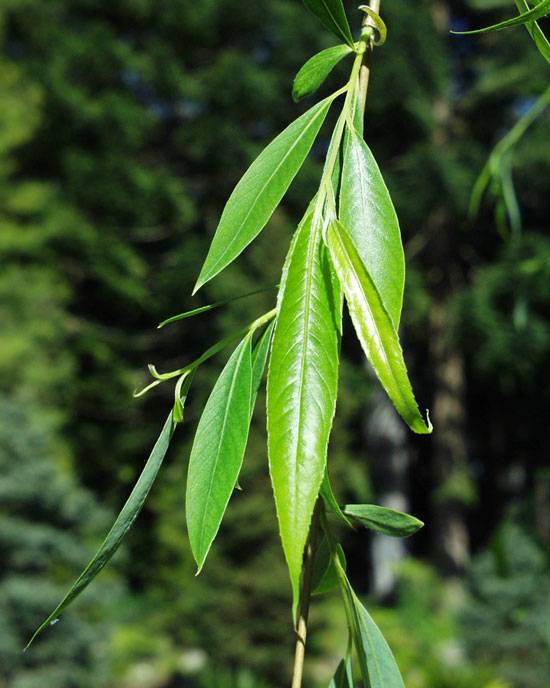
Salix sp. - willow
Salic-aceae
Shurbs and trees; often difficult to identify to species; ֎leaves alternate, usually lanceolate, ֎typically long and narrow; ֎flowers arranged in catkins; characteristic of stream-banks and moist conditions, floodplains, pond edges, shores; young branches commonly fall and make new individuals. Salicylic acid (aspirin) in the bark of nearly all species throughout the world, you can chew on a young twig (eating large dry bark is undesirable and less effective).
|
Tree -woody |
|---|
|
Dicot |
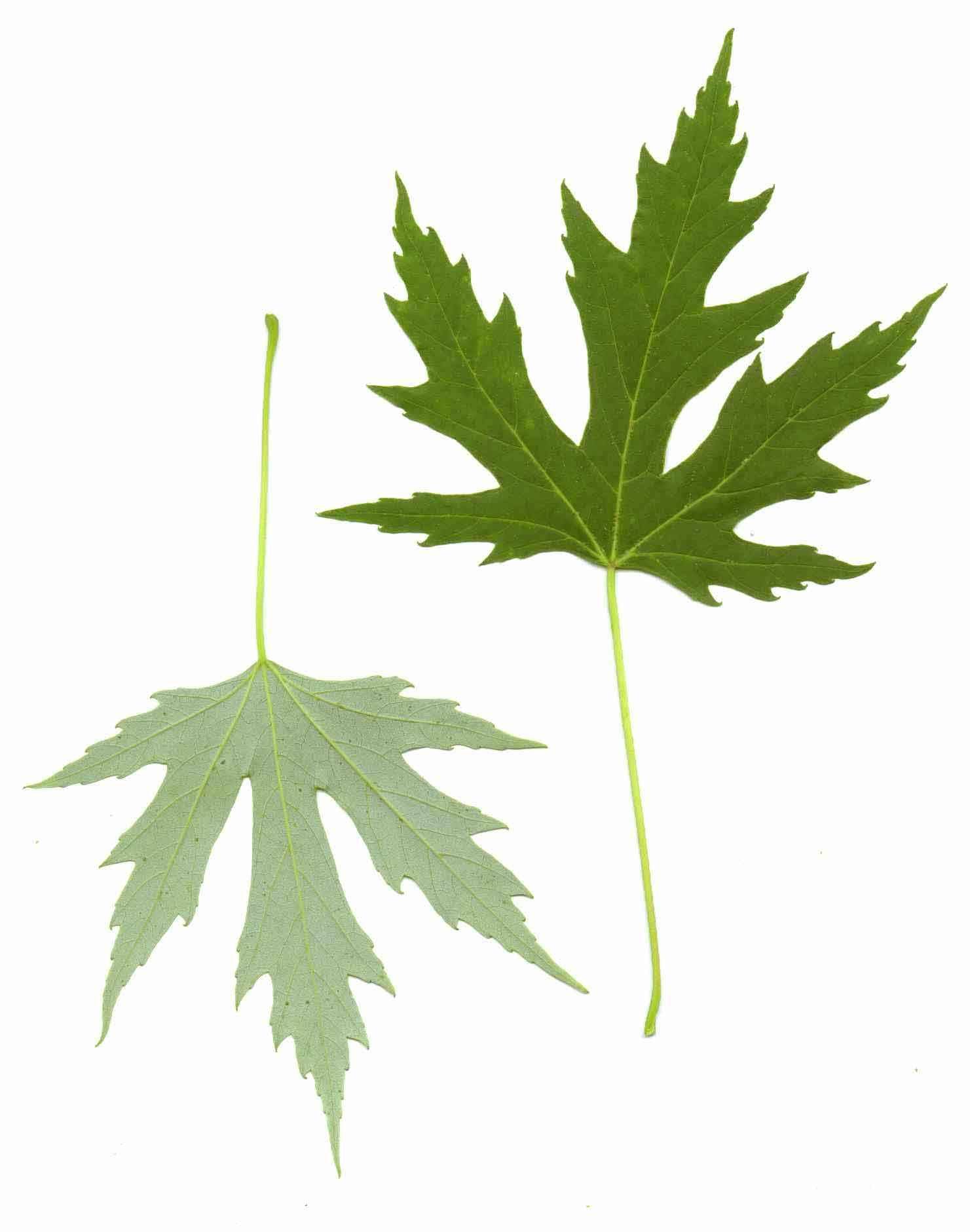
Acer saccharinum – silver maple
Acer-aceae (new name Sapind-aceae)
Tall tree 40-60’; leaves ֎opposite ֎very deeply lobed (3-5), slightly silver/whitish on lower surface; twigs and buds reddish; moist soils, stream-banks, floodplain.

Carya sp. – hickory
Jugland-aceae
Large to medium tree; compound leaves ֎alternate with ֎5-9 leaflets; fruit husks splitting in 4 parts.
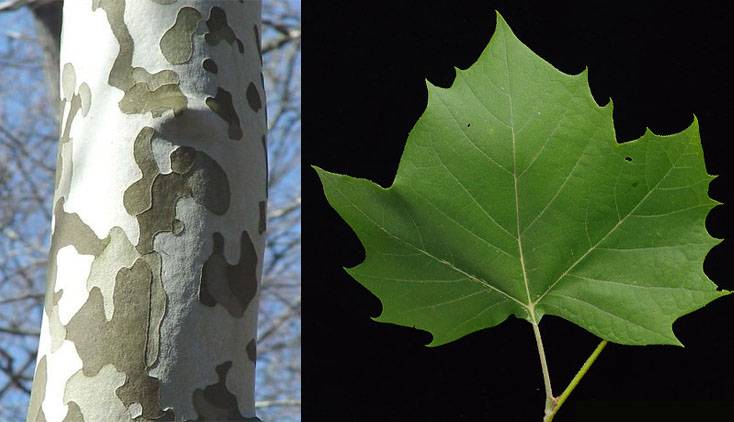
Platanus (occidentalis) - sycamore
Platan-aceae
Large tree 50-130’; ֎bark mottled like camouflage green-white-brown-grey, flakes off in a jigsaw-like puzzle; leaves alternate, ֎3-5 lobed (similar in appearance to a maple), ֎very large 6”-10”, edged w/ sharp teeth; leafstalk bases hollow, encircle buds; flowers small in globose heads in April; fruits small, hairy, in tight brown long-stalked hanging balls; floodplains, wet soil.
